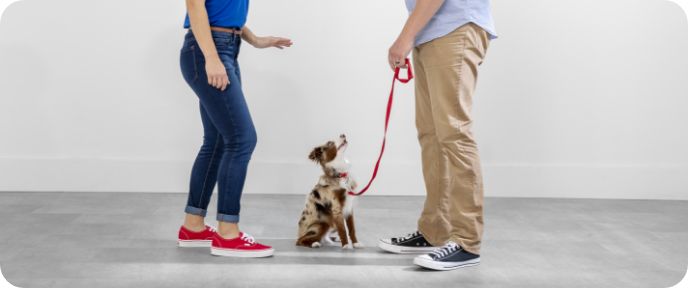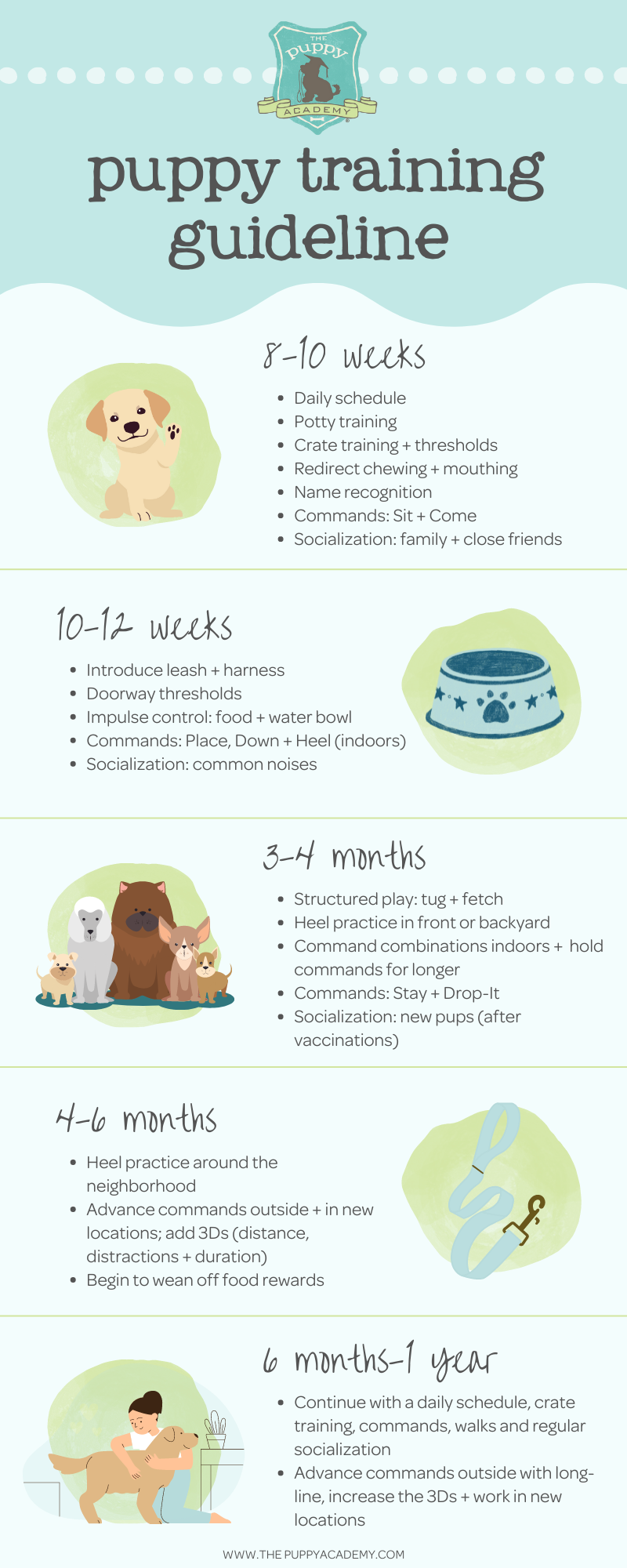Puppy Training Techniques: Teaching Basic Commands for a Happy Pet
Puppy Training Techniques: Teaching Basic Commands for a Happy Pet
Blog Article
Leading Pup Educating Methods to Guarantee a Mannerly Pet Dog
Reliable puppy training is essential for cultivating a well-behaved companion, and numerous strategies can significantly affect a pet's growth. Among these, positive support stands out as a foundational approach, advertising trust and motivating desirable habits. Consistency in commands and very early socializing are similarly essential, laying the groundwork for a well-adjusted pet dog. Additionally, the functions of pet crate training and chain rules can not be forgotten. As we discover these techniques even more, it becomes clear that the success of pup training rests on a combination of approaches that can change your animal's actions in exceptional methods.
Positive Support Techniques
Using positive support techniques is crucial for efficient pup training, as it encourages preferred behaviors with incentives instead of penalty. This method exploits on the natural understanding processes of canines, enhancing etiquette by supplying tangible and instant incentives, such as treats, praise, or play. By linking positive results with certain activities, puppies are most likely to repeat those habits in the future.
Benefits ought to be given right away after the desired behavior takes place to develop a clear link in the puppy's mind. In addition, differing the types of rewards can keep a young puppy's interest and inspiration throughout the training procedure.

Consistency in Training Commands
Preserving uniformity in training commands is vital for strengthening the lessons found out through positive reinforcement strategies. Dogs flourish on routine and predictability, so using the very same verbal commands and hand signals for details behaviors is essential. This uniformity aids pups understand what is expected of them, lowering confusion and disappointment for both the trainer and the animal.

Timing also plays a significant duty in consistency. Commands need to be provided quickly throughout training sessions and adhered to immediately by favorable support, such as deals with or praise. This immediate reaction aids solidify the association in between the command and the preferred behavior.
Integrating consistency right into training sessions will develop a steady knowing setting, promoting quicker proficiency of commands. Eventually, a well-structured approach promotes a solid bond between the pup and its proprietor, leading to a much more well-behaved and loyal pet dog.
Socializing With Various Other Animals
Socializing with other pet dogs is essential for a pup's development, as it assists them find out suitable actions and communication skills in varied social contexts. Very early interactions with various animals can substantially affect a puppy's character and adaptability in different situations. When puppies are subjected to a selection of pets, they end up being extra confident and less scared, which can avoid possible behavior issues later in life.

In addition, observing body movement throughout communications is crucial. Instruct your puppy to identify signals from various other family pets, such as Continue signs of playfulness or pain, promoting mutual regard and understanding. Routine socialization not just enhances your pup's social skills however also contributes to their overall health, developing an extra harmonious living environment. In verdict, focusing on interactions with other animals will certainly generate a well-rounded and socially experienced dog.
Dog Crate Training Advantages
Identifying the various benefits of crate training can greatly improve both the pup's and owner's experience. Crate training supplies a secure and secure environment for pups, ensuring they feel secured when laid off. This sense of protection can considerably minimize anxiousness and tension degrees for both the pet dog and the owner.
Additionally, cages offer as a beneficial housebreaking tool. Young puppies normally avoid soiling their sleeping area, consequently urging them to hold their bladder till they are let outside. This instinct can accelerate the housebreaking process, fostering good routines beforehand.
Crate training also helps in handling a pup's habits when not being watched. By offering an assigned area, owners can avoid damaging behaviors, such as chewing on furniture or entering into unsafe compounds. Additionally, cages can be helpful during travel, offering a familiar space that can help calm a pup in new atmospheres.
Finally, establishing a dog crate regular urges independence, permitting puppies to discover how to be alone without concern. Overall, pet crate training is a reliable approach for promoting peace, discipline, and safety and security, resulting in a well-adjusted, mannerly family pet.
Leash Training Essentials
Leash training is a basic element of liable animal possession that guarantees a delightful and safe strolling experience for both the puppy and its owner. Correct leash training begins early, preferably during the young puppy's socializing period. When out in public., this training aids establish great behaviors and promotes positive actions.
To start, select a comfortable collar or harness that fits your young puppy well. Affix a sturdy chain, guaranteeing it is not also long, as this can result in pulling and irregular actions. Start in a peaceful atmosphere to decrease distractions and gradually introduce your pup to new environments.
Usage favorable reinforcement methods, such as treats and praise, to encourage your young puppy to stroll next to you. If your young puppy pulls, stop strolling and wait for them to return to your side before proceeding.
In addition, include brief training sessions with enjoyable distractions to build your puppy's emphasis. With devotion and perseverance, chain training will cause an accommodating friend, making strolls satisfying for both the proprietor and the puppy.
Verdict
In conclusion, utilizing effective young puppy training methods is critical for establishing a mannerly animal. On the whole, these methods jointly advertise an unified connection in between puppies and their owners.
As we check out these approaches even more, it comes to be clear that the Source success of puppy training pivots on a mix of strategies that can transform your family pet's actions in exceptional methods.
Using positive support strategies is essential for effective young puppy training, as it motivates preferred behaviors via incentives instead than penalty.Crate training additionally assists in handling this link a pup's behavior when not being watched.Leash training is a fundamental element of liable family pet ownership that makes sure a enjoyable and secure strolling experience for both the puppy and its proprietor.In conclusion, employing efficient young puppy training strategies is important for establishing a mannerly pet dog.
Report this page